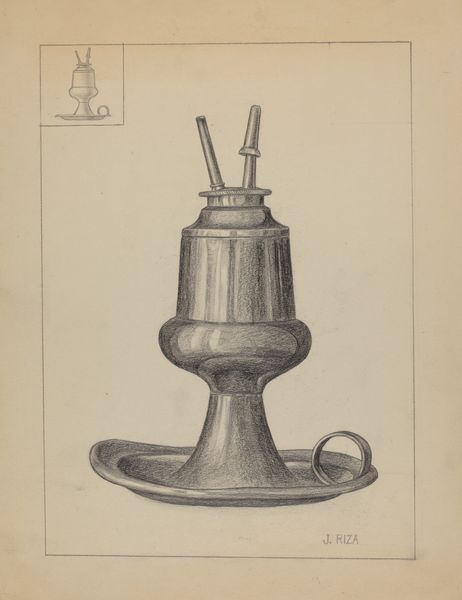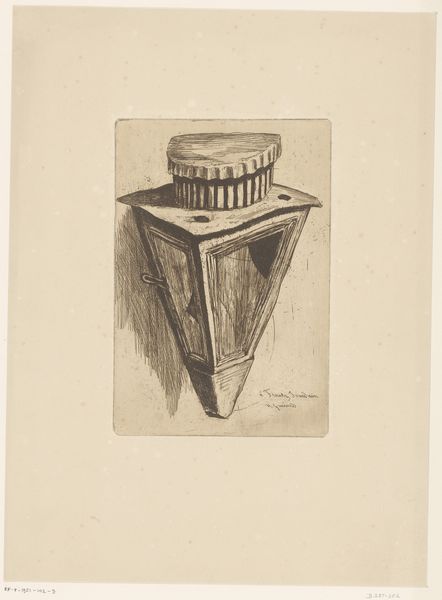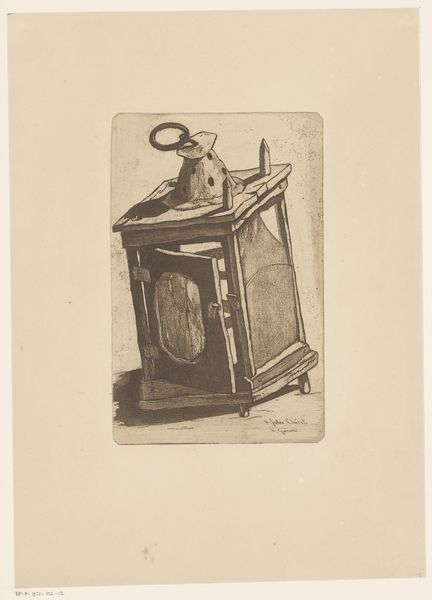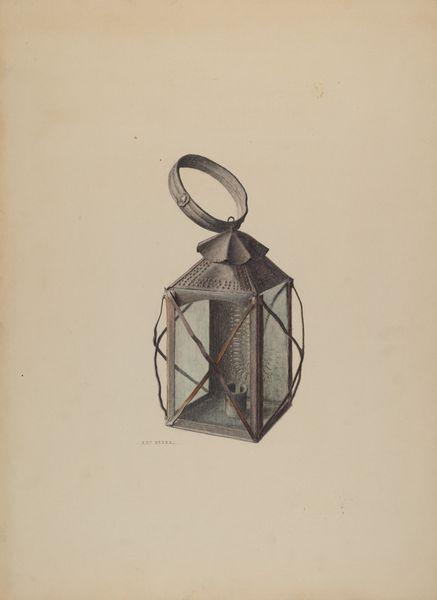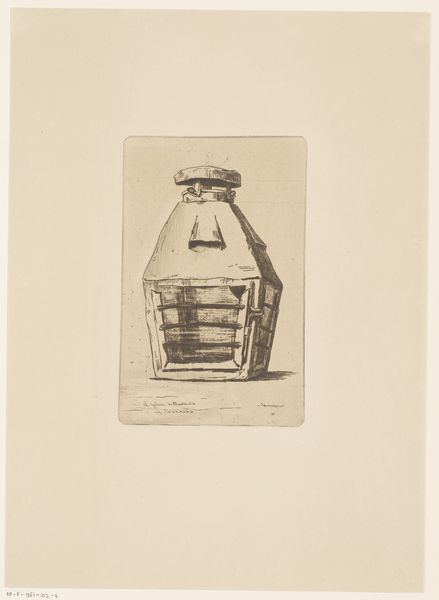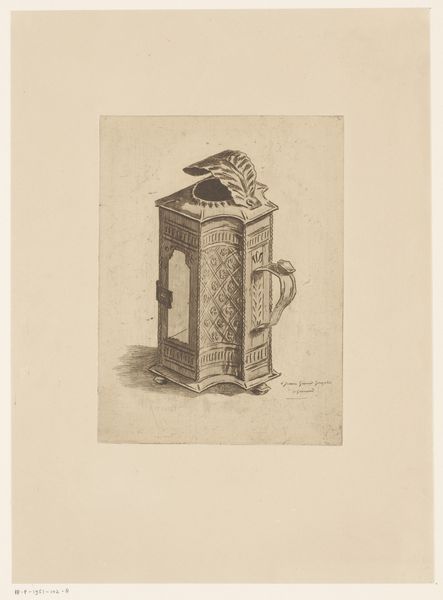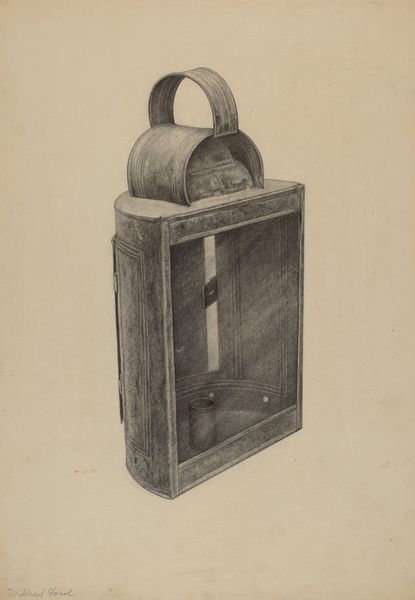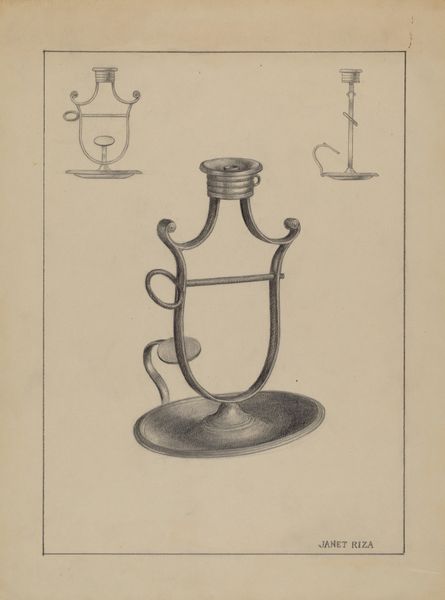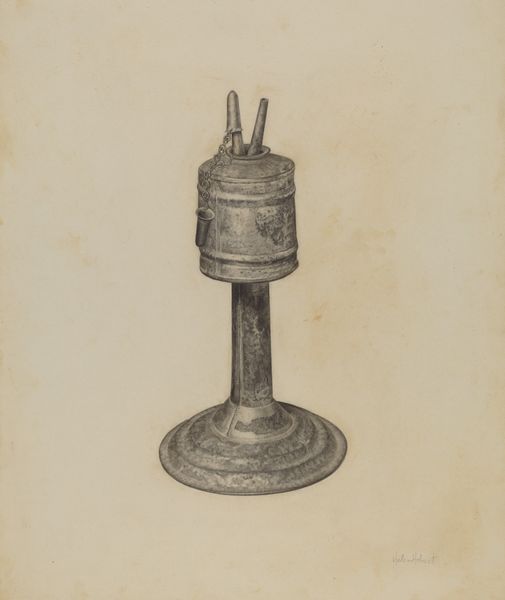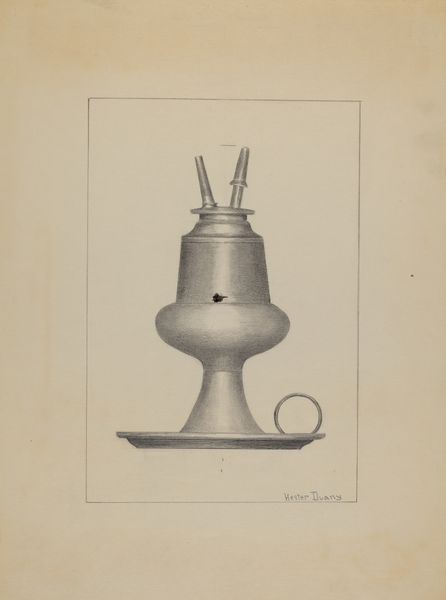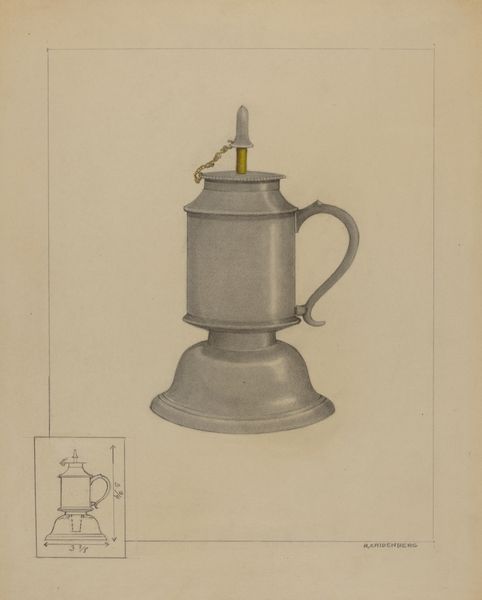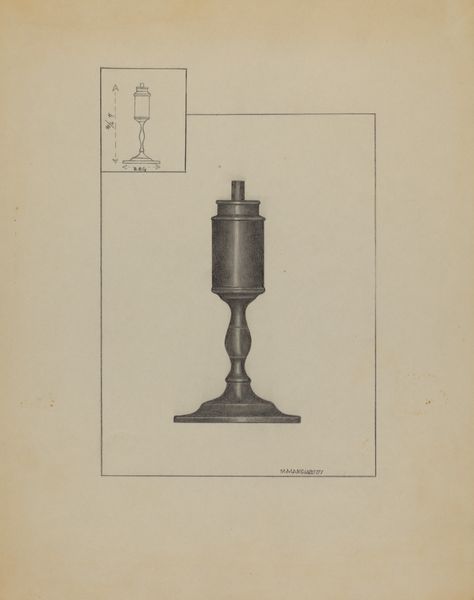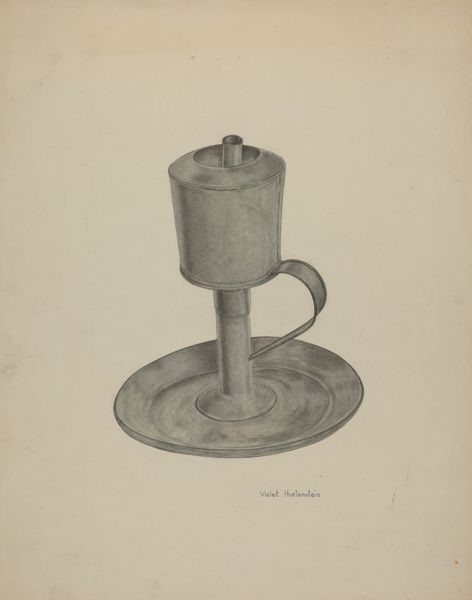
graphic-art, print, etching
#
graphic-art
# print
#
etching
#
realism
Dimensions: height 199 mm, width 109 mm
Copyright: Rijks Museum: Open Domain
Editor: This is "Lantaarn," or "Lantern" in English, an etching made by Henri-Charles Guérard in 1876, currently residing in the Rijksmuseum. There's something quite charming about its depiction of a rather utilitarian object. The composition is intriguing. What can you tell me about its historical context? Curator: It's fascinating to consider the public role of something as seemingly mundane as a lantern in 19th-century society. Etchings like this were often circulated as prints, weren't they? Do you see any inscription? "A Troyes - Whey" perhaps. It is potentially about where it came from or what it was designed for, hinting at the rise of industrial production and consumer culture, and the impact of that in different communities. The attention to detail is certainly striking; perhaps almost advertisement or novelty-esque, wouldn't you agree? Editor: Yes, I see what you mean! It does highlight how everyday objects were becoming increasingly marketable. Did social class affect its importance? Curator: Absolutely. Consider the politics of imagery and who would have access to such objects, but even the *image* of such objects. Who controlled the narrative around its usage? Was this the lantern of the burgeoning bourgeoisie home? A light in public? Etchings made art accessible and reproducible. Think about how prints allowed imagery to spread, informing public opinion and even shaping political discourse. Editor: That’s a point! Thinking about it this way, this small object has broader significance related to socio-economic contexts of that period. Thank you for clarifying that for me! Curator: My pleasure. It's rewarding to find those little threads that connect art to wider historical narratives, don't you think?
Comments
No comments
Be the first to comment and join the conversation on the ultimate creative platform.
